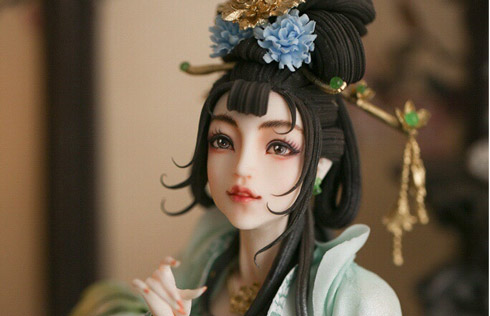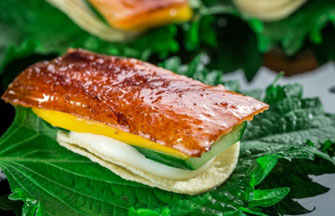Looking to find, feed new food consumers
Agricultural firms step up their efforts to export higher value-added products instead of cheap produce, report Yao Jing and Ding Qingfen in Zhucheng, Shandong
In the spacious workshop of Zhucheng Waimao Co Ltd, a poultry producing and processing company in Shandong province, workers wearing white overalls and masks were cleaning, cutting and packaging chickens. The rumble of machines meant voices had to be raised when people spoke.
All of the chickens being processed were transported from nearby feeding farms managed and owned by the company. The modern production line looks clean and efficient.
This has changed a lot compared with several years ago when the company was more like a farm and was buying chickens from scattered peasant households who could not guarantee the quality of their chickens and other animals.
"We have invested more than 20 million yuan ($3.26 million) in establishing an experimental plant to push innovation and ensure the quality and safety of our poultry products," said Wang Jinyou, general manager of Zhucheng Waimao.
Wang's 38-year-old company is just one of the numerous Chinese agricultural producers that are struggling to move up the value chain against the background of the country's determination to upgrade and transform its foreign trade.
One of the most important improvements for China's agriculture exporters is from selling cheap fresh products to processed goods tagged with higher prices.
Japan, which is known for its strict regulations over imported agriculture products, accounts for 70 percent of Zhucheng Waimao's total food exports.
"All of our products shipped to Japan have passed quality tests since 2008," said Wang.
Right now, Wang is planning to develop new cooked products based on different tastes and cooking methods. In the meantime, he will raise the price of existing new products.
Large packages will also be adjusted to offer smaller ones, such as shrinking one bag of fried chicken from 300 grams to 160 grams, to meet local customers' demands. In order to cater to the elderly in Japan, Wang will launch softer products that are more easy to chew.
Wang is also trying to switch to the Chinese market. "The key factor for expanding in the domestic market is cultivating our brand names. Although we were not previously paying attention to the Chinese market, we are now realizing it has great potential," he said.
Today, the China market accounts for 70 percent of Wang's total sales in quantity. However, as for its business value, China is worth just 40 percent.
Another high-yielding Chinese agricultural product, garlic, which totaled $1.69 billion in exports in 2012, is also taking off after production was upgraded.
In Pizhou in East China's Jiangsu province, the garlic planting area is about 467 million square meters. There are nearly 500,000 garlic farmers. Garlic exports from there account for 10 percent of China's total exports of the root. In recent years, 36 companies have begun to conduct garlic-processing businesses, with five engaging in extended processing.
Local government and companies have invested 200 million yuan in garlic innovation and brand building. New products made using better technology include garlic oil, allicin, an organosulfur compound obtained from garlic, and garlic capsules.
"Ten tons of garlic can produce one ton of allicin with a purity of 10 percent. The value of the garlic used will surge nearly tenfold to 200,000 yuan," said Du Feilong, deputy director-general at Pizhou Bureau of Commerce.
Garlic cloves will become the main exporting product among extended processing products.
"The export of garlic cloves is 8,000 to 10,000 tons every year, which accounts for 10 percent of our total garlic output every year," said Du.
However, the overall agricultural foreign trade has its problems, with China's trade deficit in the sector widening since 2004 as it relies more on imports.
In general, the country's total agricultural trading volume, including fish and forestry, reached $205.5 billion in 2012, up 9.3 percent from 2011. Nonetheless, the trade deficit in agriculture expanded to $56 billion, up 20 percent compared with 2011, according to a China Agricultural Trade Report in 2012 released by the United States Department of Agriculture Foreign Agricultural Service.
Faced with deteriorating trade conditions, such as the appreciation of the yuan, concerns over food safety and pollution in China as well as trade friction, farm exporters are trying to figure out a smooth path to avoid decreasing export volumes.
"Overall agricultural exports remain small and the added value of products is still low. For a long time, Chinese agricultural exporters have been pursuing short-term benefits, which has resulted in cutthroat competition," said Huang Guiheng, manager of Bric Global Agricultural Consultants.
"Although companies are realizing the problem and beginning to pay attention to research and innovation, it will take a long time to make advances in technology and risk management to form a solid basis to contend against international fluctuations and challenges," said Huang.
Huang said Chinese poultry producers have made progress in developing new products and finding multi-marketing channels in foreign trade. But they are still vulnerable because they are short of core technology.
Zhucheng Waimao is worrying about shrinking profit margins in exports in the next half of this year.
"With Japan's currency devaluation, Japanese buyers we signed orders with after March have asked for a reduction in price of 3 to 5 percent," said Wang. Wang's company receives orders in advance of just three to six months, so the business was not affected in the first five months of this year.
In fact, all of its products are dollar-denominated to fend off risks of floating exchange rates. But because its main market is in Japan, it has had to compromise this time.
| Giving take-out roast chicken a French twist |


























